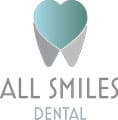One question we hear quite often is, “What is occlusion?” Occlusion refers to the relationship between the top teeth and the bottom teeth, or the bite. The term “malocclusion” literally means “bad bite.”
What Are Occlusion Bites?
There are several different types of occlusion bites. The most common include the following:
- Upper protrusion: Commonly called “buck teeth,” an upper protrusion means the front teeth are pushed outwards. This might be caused genetically or by excessive thumb sucking.
- Impaction: An impacted tooth is still completely or partially covered by bone or gum, and it hasn’t grown entirely into the mouth.
- Spacing or crowding: A disconnect between teeth size and jaw space can cause excessive spacing or crowding in the mouth. In some cases, crowding can cause impaction.
- Underbite: An underbite means the lower teeth stick out further than the upper teeth.
- Overbite: The opposite of underbite, an overbite is when the upper row of teeth sticks out further than the lower teeth.
- Crossbite: Crossbite refers to any occlusion where at least one of the upper teeth is on the wrong side of the bottom row of teeth.
- Open bite: An open bite occurs when the front teeth don’t close completely, even when the mouth is all the way closed.
- Misplaced midline: A misplaced midline occurs when the center of the top row of teeth does not line up with the center of the bottom row of teeth.
Occlusion Bite Classifications
When malocclusions occur, they are categorized into one of three classes:
- Class I: This class covers bites where the molars are properly lined up, but there is too much or too little space in the mouth. If the arch of the jaw is too small, or the teeth are too large, teeth can get pushed out of position or be missing completely.
- Class II: This class refers to bites where the top jaw sticks out well beyond the lower jaw. There are two divisions within Class II. Either the front teeth stick out, giving the appearance of what is commonly called “buck teeth,” or the front teeth are straight, but they almost entirely cover the bottom teeth.
- Class III: These bites occur when the lower molars are too far forward in relation to the upper molars. This makes the lower jaw appear to jut out.
Why Should I Get an Occlusion Bite Fixed?
Most people get occlusion bites fixed because it makes their smile more attractive and boosts their confidence. People who want to fix their bite for this reason often pursue an Invisalign dentist because the aligners are more physically attractive than traditional wire braces. There are also health benefits to resolving a malocclusion. Bad bites can cause dental complications up to, and including, premature tooth loss.
How Are Occlusion Bites Fixed?
In extreme cases, occlusion bites require surgery before they can be entirely resolved. Before you consider costly and invasive surgery, contact a dental office in NYC to learn about better options.
Get Treatment at All Smiles Dental
All Smiles Dental is the leading Invisalign dentist in New York City. We specialize in using Invisalign technology because it yields amazing results and looks much better than other options. In many cases, we can achieve the desired results in as little as one year. Talk to us today or schedule an appointment to get the process started!

